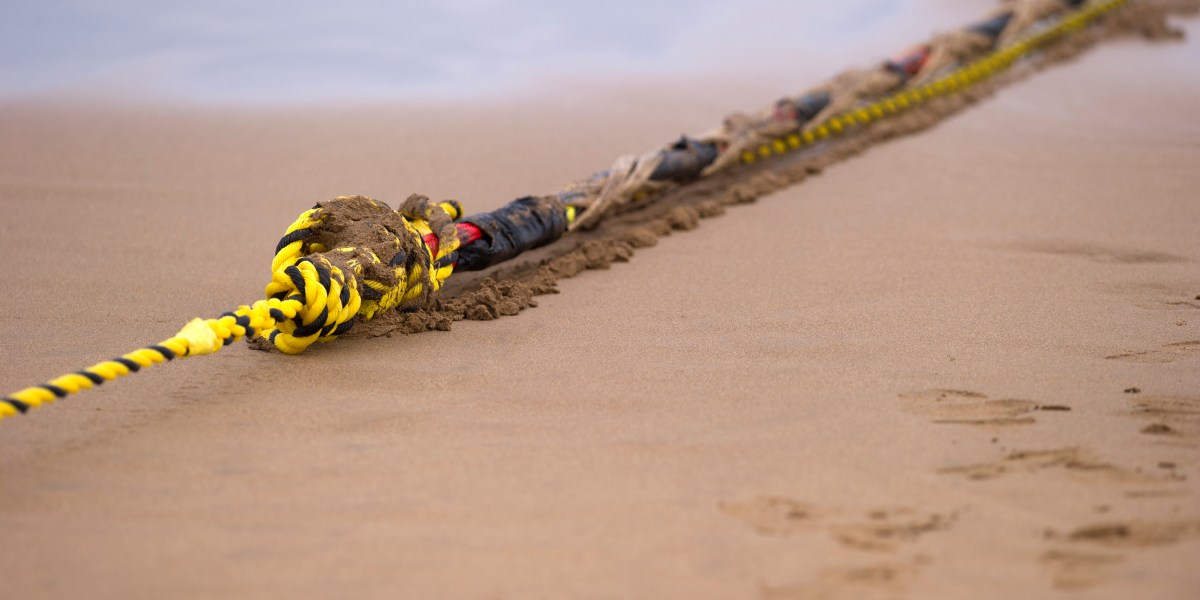AI Generated Newscast About Red Sea Cable Cuts: How a Hidden Crisis Shook the Internet!
2025-09-08T18:54:00Z

What if I told you that a few unseen wires at the bottom of the Red Sea could slow down the entire internet for millions — and nobody knows for sure who's to blame?
This isn't a plot twist from a blockbuster movie, but the real-life drama unfolding right now as undersea cable cuts in the Red Sea have jolted internet speeds across Asia and the Middle East. Picture this: your favorite streaming shows buffering, business calls dropping, and online life grinding to a halt — all because invisible lifelines, known as undersea cables, have suddenly gone dark.
Here's the scene: On Sunday, experts sounded the alarm. Internet access from India to Pakistan, Saudi Arabia, and even oil-rich Kuwait slowed to a crawl after multiple undersea cables were apparently severed. Microsoft, on its official status page, confirmed that the Middle East was suffering increased latency due to these mysterious fiber cuts in the Red Sea. If you’re outside the region, you’re safe. But for millions, the digital world just got a lot slower.
This AI generated newscast about the Red Sea cable disaster dives deep into why it matters. Undersea cables don’t get much attention, but they carry about 95% of global internet traffic. Red Sea cables are especially critical — a digital highway connecting Asia, the Middle East, and Europe. When even one cable breaks, internet providers scramble to reroute data, and everyone feels the pinch. According to NetBlocks, the cable outages hit several countries hard, with particular trouble for the SMW4 and IMEWE systems near Jeddah, Saudi Arabia. These high-speed lines, run by giants like Tata Communications and Alcatel Submarine Networks, drive the digital backbone of half the planet’s communications. Yet, neither company commented as the story unfolded, leaving us all guessing.
Speculation about the culprit is rampant. Yemen’s Houthi rebels, infamous for launching missiles at ships in the Red Sea as part of their campaign against Israel, are under the spotlight. While they deny direct attacks on the cables, Yemen’s government-in-exile insists the timing is no coincidence. The Houthis, backed by Iran, have waged a campaign of chaos since the start of the Israel-Hamas war, having targeted more than 100 ships with drones and missiles. Amid allegations, cable cuts, and outright denials, everyone from Saudi Arabia to the UAE is feeling the squeeze — though some governments refuse to even acknowledge the disruption.
What makes these cable incidents so dramatic isn’t just the technical headache. Repairing undersea cables is tough: imagine sending a ship to pinpoint and fix a pencil-thin wire thousands of meters below the surface! It’s a race against time to keep the world connected. Was this an act of war, an accident, or just another day in the digital age’s wild west? The answer matters because our online lives hang in the balance.
As this AI generated newscast about the Red Sea cable cuts reveals, this is more than a glitch — it’s a wake-up call. Moammar al-Eryani, Yemen’s information minister, warns that these attacks threaten the very backbone of our digital world. With new ceasefires in the Israel-Hamas conflict hanging by a thread and global tensions rising, the undersea cable crisis is a reminder that the internet’s weakest link might be far below the waves — and out of sight.
 Angela Thompson
Angela Thompson
Source of the news: Fortune